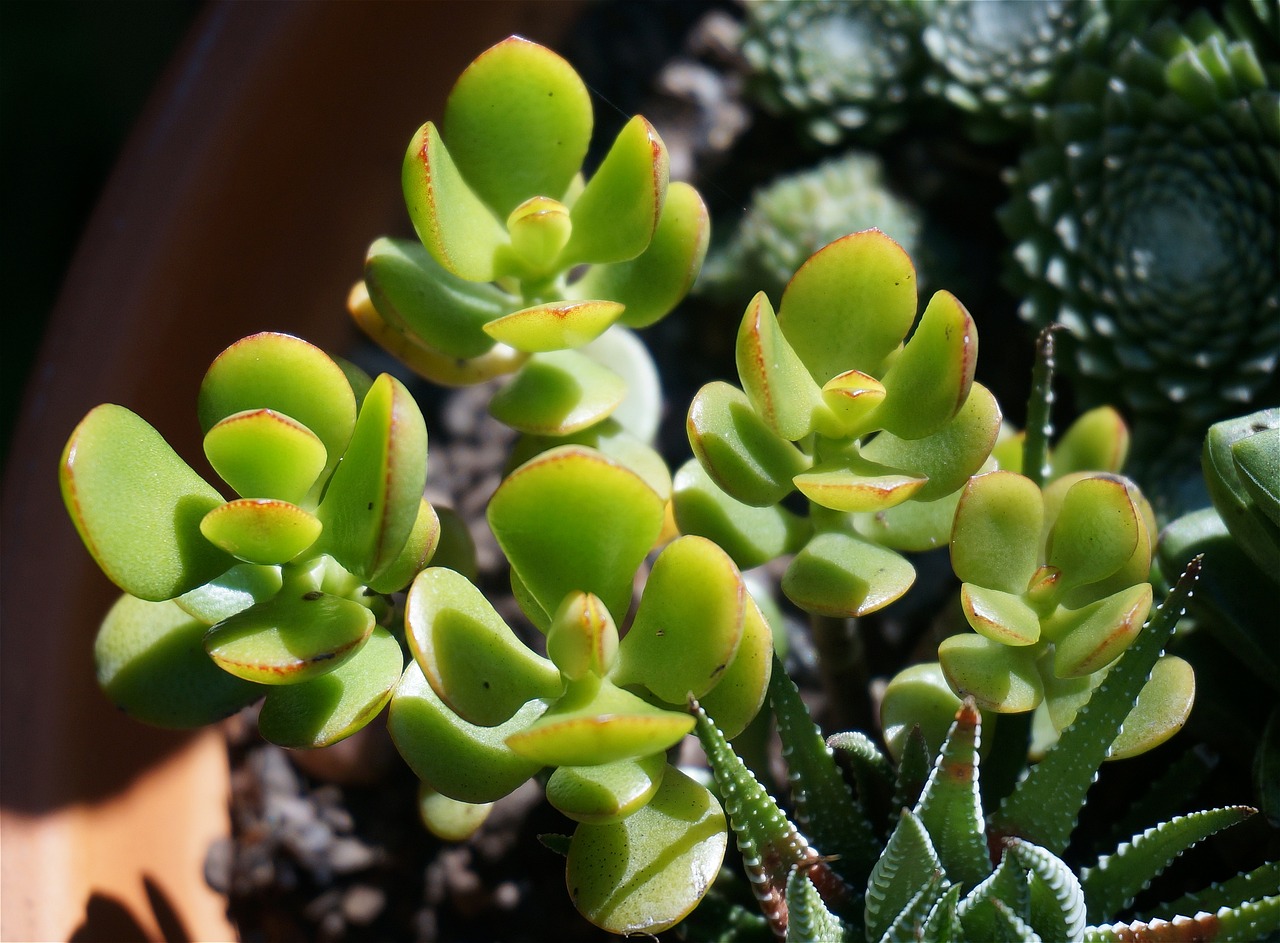Jade plants, known scientifically as Crassula ovata, are beloved for their thick, fleshy leaves and low-maintenance nature. These popular succulents, often associated with good luck and prosperity, can thrive with minimal effort, making them perfect for both novice and experienced gardeners. Understanding the essentials of jade plant care can ensure your plant remains healthy and vibrant for years to come. This guide covers the top ten care tips for maintaining a flourishing jade plant.
1. Choosing the Right Soil
Jade plants require well-draining soil to prevent root rot. A succulent or cactus mix is ideal, as it provides the right balance of nutrients and drainage. You can also create your own mix by combining regular potting soil with sand or perlite in a 2:1 ratio.
Proper soil ensures that water doesn’t linger around the roots, which is crucial for jade plants. Overly wet conditions can lead to root rot and other fungal issues. By ensuring your plant has the right soil, you promote healthy root development and overall plant vitality.
2. Pot Selection
Selecting the right pot is crucial for jade plants. Opt for a pot with drainage holes to allow excess water to escape. Terracotta pots are excellent choices because they are porous and promote better air circulation around the roots.
Avoid using pots without drainage, as jade plants are susceptible to overwatering. The material of the pot also plays a role; while plastic pots are lightweight and affordable, they may not provide the same level of breathability as terracotta or ceramic options.
3. Watering Techniques
Proper watering is essential for jade plant care. Water thoroughly, allowing the soil to dry out completely between waterings. Overwatering is a common mistake, leading to root rot and other issues.
During the growing season (spring and summer), water more frequently, but reduce watering in the fall and winter when the plant’s growth slows down. Always check the soil moisture before watering to avoid unnecessary watering.
4. Light Requirements
Jade plants thrive in bright, indirect sunlight. Place them near a south or west-facing window where they can receive plenty of light without direct exposure, which can scorch the leaves.
Inadequate light can cause the plant to become leggy and weak. If natural light is insufficient, consider using grow lights to supplement. Proper lighting ensures healthy, robust growth and enhances the plant’s vibrant color.
5. Temperature and Humidity
Jade plants prefer temperatures between 65-75°F (18-24°C) during the day and slightly cooler at night. They are not frost-tolerant, so keep them away from cold drafts and freezing temperatures.
While jade plants are adaptable to various humidity levels, they thrive in average indoor humidity. Avoid placing them in overly humid environments, as this can lead to fungal problems. Maintaining a stable temperature and humidity level supports optimal growth and health.
6. Fertilizing Schedule
Fertilize jade plants sparingly, using a balanced, water-soluble fertilizer diluted to half strength. Apply during the growing season, typically once every 4-6 weeks, and avoid fertilizing during the dormant winter period.
Over-fertilization can harm jade plants, causing nutrient burn and salt buildup in the soil. A moderate fertilizing schedule ensures that the plant receives essential nutrients for healthy growth without overwhelming its natural balance.
7. Pruning and Maintenance
Regular pruning helps maintain the shape and size of your jade plant. Remove dead or damaged leaves and trim back leggy growth to encourage a fuller, bushier appearance. Use clean, sharp scissors to make precise cuts.
Pruning also helps improve air circulation around the plant, reducing the risk of pests and diseases. Regular maintenance ensures that your jade plant remains aesthetically pleasing and healthy, promoting vigorous new growth.
8. Repotting Tips
Repot jade plants every 2-3 years to refresh the soil and provide more space for growth. Choose a pot that is one size larger than the current one and follow the same soil guidelines mentioned earlier.
When repotting, be gentle with the roots and ensure the plant is placed at the same depth as before. Repotting not only gives the plant a fresh start but also allows you to inspect and trim any damaged roots, promoting overall health.
9. Pest Control
Jade plants can occasionally suffer from pests like mealybugs and spider mites. Regularly inspect your plant for signs of infestation, such as white cottony masses or webbing. Treat pests with insecticidal soap or neem oil, following the product instructions.
Maintaining good plant hygiene, such as removing dead leaves and avoiding overcrowding, can also help prevent pest problems. Early detection and treatment are key to keeping your jade plant pest-free and healthy.
10. Seasonal Care
Adjust your jade plant care routine according to the seasons. In the spring and summer, focus on regular watering, fertilizing, and providing ample light. During the fall and winter, reduce watering and fertilizing as the plant’s growth slows.
Seasonal adjustments help the plant adapt to changing conditions and ensure it remains healthy throughout the year. By understanding and responding to your jade plant’s seasonal needs, you support its long-term well-being.
By following these ten essential care tips, you can enjoy the beauty and benefits of a thriving jade plant. Whether you’re a seasoned gardener or a beginner, these guidelines will help you provide the best possible care for your beloved succulent.

